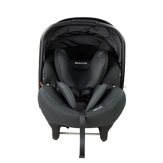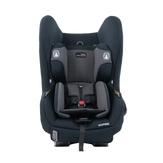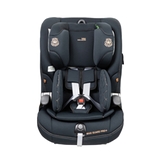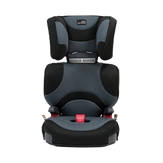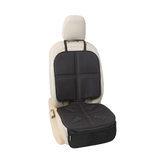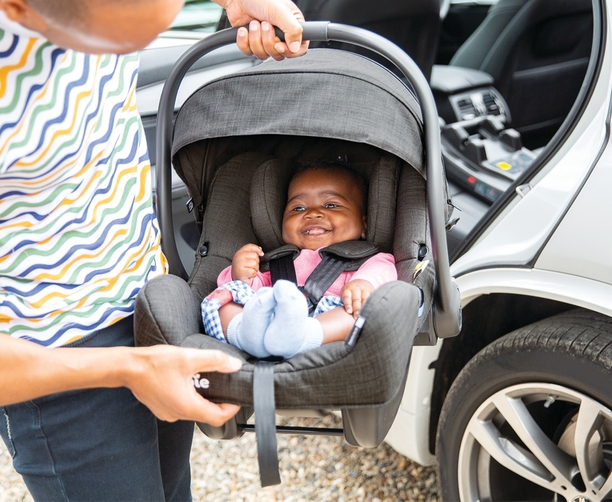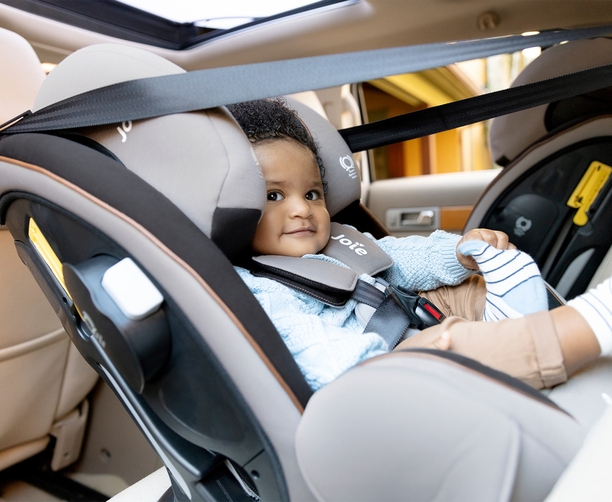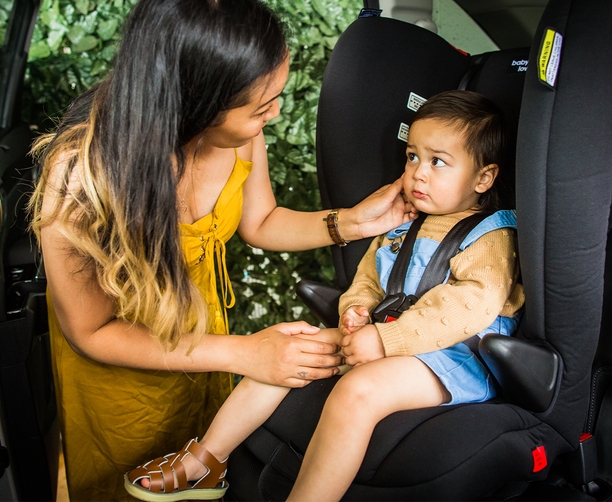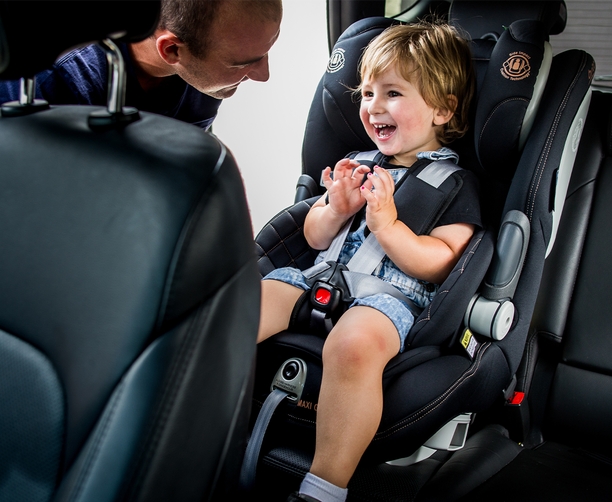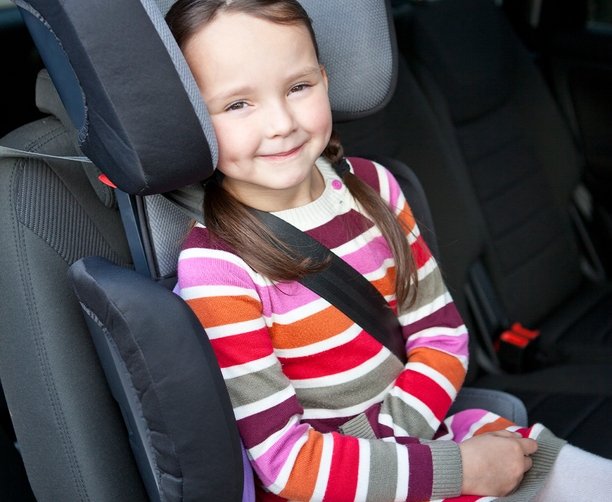Baby & Toddler Car Seats
Need advice?
Shop all Car Seats
As parents and caregivers, we always want to know our children are safe. This is especially true for travelling in the car, where having a correctly fitted child or baby car seat is extremely important for your little one’s safety and wellbeing. Ensuring your child’s safety during car travel starts with having the right baby car seat. With various types on the market, it's crucial to understand their different features, proper installation techniques, and maintenance to provide the utmost protection for your little one.
At Baby Bunting, we have a wide range of safe and comfortable child car seats so you can feel confident you're keeping your baby safer while you're out and about.
Are baby car seats necessary?
The short answer: Yes!
One of the best safety travel tips for new parents is to invest in a high quality car seat for their baby. In Australia, car seats are required by law if you are traveling with your baby. Beyond being a legal requirement, a car seat is also an essential baby gear that may save your child’s life in case of accidents.
Types of Baby Car Seats
Capsules
Designed for newborns and smaller babies, capsules such as the Maxi Cosi Infant Carrier Mico 12 are rear-facing seats that are portable and can often be attached to a stroller or may be included in a pram travel system.
Convertible Car Seats
As the name implies, convertible car seats like the Babylove ezyswitch Convertible Car Seat convert or change as your child grows. Because of this, these seats can be used both rear-facing for infants and forward-facing for toddlers, growing with your child.
Booster Seats
Used for older children who have outgrown forward-facing seats, these help position the car's seat belt correctly on the child's body. Booster seats such as the Britax Safe N Sound Kid Guard are suitable for children between the ages of 4-10 years.
Baby Car Seat Installation
Before your baby can even use their car seat, you must first install it. Baby Bunting offers car seat installation services in select locations. However, if you wish to install your car seat on your own, here are some steps and tips to keep in mind:
- Read the Manual: Always start with the car seat and vehicle manuals for specific instructions.
- Use the LATCH System or Seat Belt: Ensure a tight fit with minimal movement (less than an inch side-to-side or front-to-back).
- Correct Angle: Rear-facing seats should be installed at the correct recline angle to help keep the baby's airway open.
- Tether When Forward-Facing: Use the top tether to prevent forward movement in a crash.
- Adjust the Harness: The harness should be snug on your child, with the chest clip at armpit level.
- Position the Baby: Ensure the baby's back and bottom are flat against the seat with no slouching.
- Check Straps Regularly: Straps should be flat and untwisted.
Remember, correct installation is a must to ensure your child’s safety. If you are unsure of the process, then there’s no shame in asking professionals to help you.
What to Consider When Choosing a Baby Car Seat
Knowing the basics about car seats such as the different types and how they function can already shorten the choosing process. When you’re finally ready to make that purchase, here are some things to keep in mind:
Baby's Age, Weight, and Height
Select a seat that matches your baby's current size and offers room for growth. With different car seats available, you can opt for 0-4 or 0-8 car seats. No matter what seat you choose, ensure that your baby can sit comfortably and safely to avoid any injuries or accidents.
Compatibility
Ensure the car seat fits well in your vehicle's seats. Some car seats may be too big or small for your car. Schedule a car seat fitting before purchasing your baby’s car seat. Additionally, you may also want to use other car seat accessories with your seat, so ensuring that all parts are compatible is also necessary.
Ease of Installation and Use
Consider how easily the seat can be installed and adjusted. While there are professionals that can install car seats for you, it’s also important to consider how easy to use a model is for you. Since your baby will be using it quite frequently, knowing how to do a quick fix or adjustment will also be handy.
Safety Features
Look for seats with high safety ratings and features from trusted brands and shops. Some safety features that you should look for include:
Five-Point Harness: Secures the baby at the shoulders, hips, and between the legs for maximum protection.
Side-Impact Protection: Enhanced padding and structure to protect the child's head and chest during a side collision.
LATCH System: Lower Anchors and Tethers for Children, providing a secure installation without using seat belts.
Energy-Absorbing Foam: Helps absorb crash forces, reducing the impact on the baby.
Local Laws and Recommendations
Adhering to local car seat laws and guidelines is crucial for your child's safety. These laws dictate the appropriate type of seat based on age, weight, and height, ensuring the child is secured correctly during travel.
Information on Weight and Height Limits for Rear-Facing Seats
Rear-facing seats are generally recommended for as long as possible, up to the seat's maximum weight and height limit, which can range from 30 to 50 pounds and 32 to 49 inches, depending on the model. Always consult the car seat manual for specific limits.
Cleaning and Maintaining Your Baby Car Seat
Since your car seat will be used frequently, regular sanitation is vital in order to keep it safe for your child’s use. Some of the things you can do keep your car seat clean and maintained include:
Regular Cleaning: Wipe down the seat regularly with mild soap and water. Do not use bleach or other harsh chemicals that can degrade the materials.
Following Manufacturer's Instructions: For deeper cleaning, follow the specific instructions provided by the manufacturer.
Regular Inspection: Check for wear and tear, including frayed straps or cracked plastic, and replace as needed.
Frequently Asked Questions
How long can newborns travel in a car?
Newborns should not stay in a car seat for more than 2 hours at a time. Take breaks during long trips to allow the baby to move and change positions.
Can I reuse a baby car seat after an accident?
No, it is generally recommended to replace a car seat after any accident, as its integrity may be compromised even if damage isn't visible.
Can I use a second-hand baby car seat?
Aside from prams and strollers, a car seat is something that is best bought new. While it's possible to use a second-hand car seat, it's crucial to ensure the seat has not been in an accident, is not expired, and comes with the original instructions and all parts.
What is the weight and height limit for my baby's car seat?
Check the car seat manual for specific weight and height limits, as these vary by model.
Do I need to register my baby car seat?
Registration is highly recommended as registering your car seat with the manufacturer ensures you receive important safety updates and recall information.
